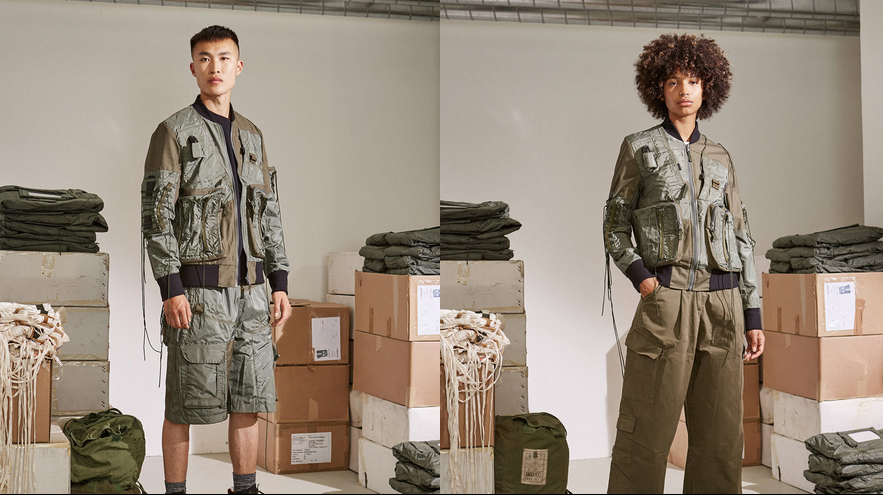“In fashion, nothing is created nor destroyed”. It is with this statement that British fashion designer Christopher Raeburn summarizes his thoughts on the fashion world and on how the production process of the entire supply chain should be rethought.
The relationship between sustainability and fashion has become one of the most discussed topics in recent years, and even the fashion system is being asked for clear answers and concrete actions. A solution came from Christopher Raeburn, who in 2008 founded RÆBURN, an entirely sustainable brand in which everyday design meets conscious production.
The first designer to gain Newgen sponsorship for both his men’s and women’s collections, Christopher Ræburn has won several awards such as the title of “Brand of the Year” at the Drapers Sustainable Awards 2020. In addition, one of his collections was exhibited at the Design Museum in London as part of the “Sustainable Futures Made in Portugal” program.
Growing up exploring the nature of the Markbeech forest in Kent, and collecting military clothing that he now jealously guards in his studio, for Christopher Raeburn in fashion nothing is created nor destroyed. Having environmental awareness and ethics means knowing exactly how, where, and why you produce your creations.
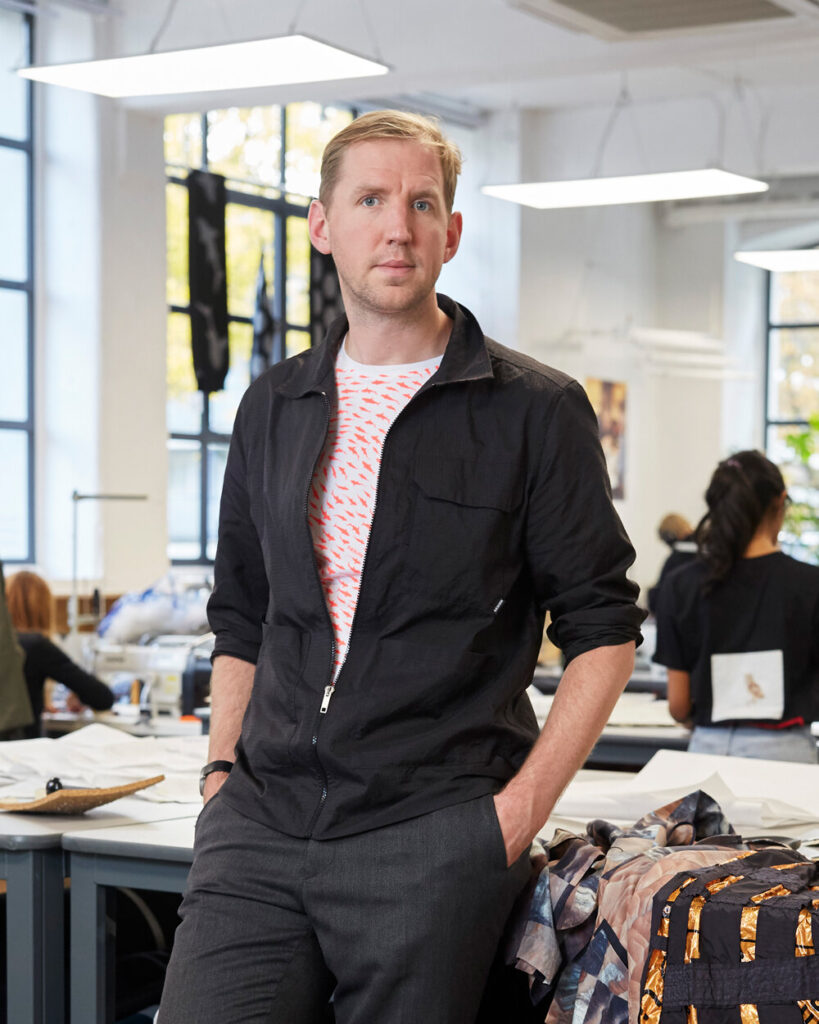
His creativity has developed together with the idea of functionality, aiming to use materials in an intelligent way, reducing waste without sacrificing aesthetics. The result is responsible manufacturing in which nothing is created nor destroyed using pre-existing fabrics.
«There’s so much stuff out there, that instead of buying new material I wonder what I can take apart and rebuild to make it contemporary and beautiful. The process is exciting» – said the designer in an interview.
The ethics of RE-MADE: nothing is created nor destroyed
In Raeburn, the ethics of RE-MADE paved the way for repurposing excess fabrics and garments to create unique handmade and functional pieces. This innovative approach where nothing is created nor destroyed, a balance between high creativity, accessibility, and wearability, is applied to menswear, womenswear, luggage, and accessories. There is no material that Raeburn is unable to reclaim. In fact, the materials used in his collections are entirely “re-made in England”. Stockpiles of fabrics from a wide variety of backgrounds that are reused and brought to a new purpose. Raeburn also aims to keep its production in England, supporting local artisans who produce high-quality materials with low environmental impact.
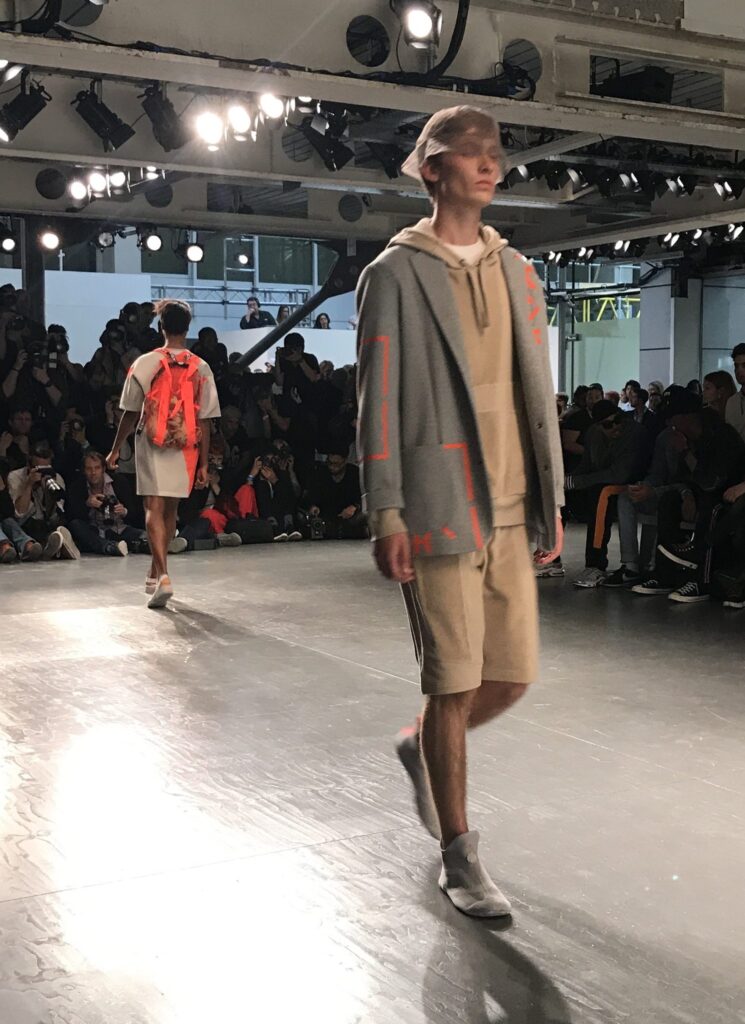
An approach that the East London designer has always carried out. A parachute bought for £30 on eBay transformed into 8 garments from the first fashion show. Lifeboats from the FW 2015 collection and drag chutes transformed into jackets and t-shirts presented at Pitti 98. For the FW 18 collection, Raeburn rebuilt old nylon windbreakers as raincoats, anoraks, and sports tops, and reworked windproof German ponchos into contemporary parkas.
RAEFOUND: military surplus transformed into eco-chic prèt à porter
RÆFOUND, a pun between the designer’s last name and the verb to find. The collection, or rather the re-proposal of selected garments, is intended to be an intelligent solution to the growing environmental crisis and the problem of the global increase in clothing stocks, which have grown exponentially in volume due to the current pandemic situation. Forty-three pieces of surplus original, never-worn military clothing and accessories, personally purchased by Christopher Raeburn, create a full-size range that was put together by searching factories across Europe. There’s a gorgeous British pilot’s gilet with leather edged pockets and precision-tooled zippers and several desert expedition-style camouflage looks.
Unlike what was done in the Raeused collection (military pieces cut and re-customized), here the only intervention is the addition of RÆFOUND patches as a mark of origin and certification of the quality of the garments. All the information about the garment will be found on a Qr-code that you can scan with your phone.
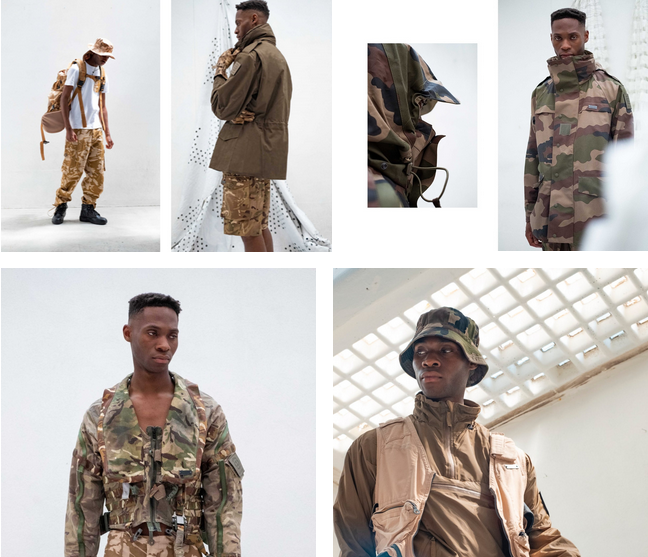
Nothing is created nor destroyed even in collaborations
Collaborating with brands and designers committed to making a positive change in the sector has always been a source of great motivation for RÆBURN. Christopher’s ability to fuse utility and sustainability with aesthetic desirability has resulted in numerous collaborations under the banner of shared sustainability.
Raeburn and Aesop
Raeburn’s partnership with Australian skincare brand Aesop aims to meet the needs of travelers looking for practical and functional products. The result is Adventurer Roll Up, a portable hand-care case for on-the-go hand-care, available in three variations. Made from 80% recycled cotton, three functional pockets contain a trio of Aesop products (Resurrection Rinse-Free Hand Wash, Resurrection Aromatique Hand Balm, and the new Resurrection Rinse-Free Hand Mis). Moreover, a shared branded cotton band allows it to be rolled up securely for carrying on holiday or in your purse throughout the day.
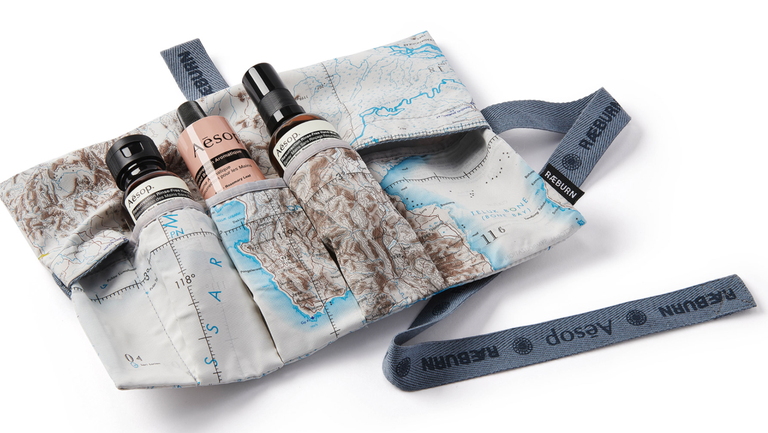
A limited-edition of 300 pieces, created using aeronautical navigation maps from the 1960s depicting territories affected by climate change such as Borneo, hit by extreme deforestation, and the Aral Sea, which has receded due to overproduction. With a single map, it is possible to make four Roll-ups, with no waste of material.
Finally, RÆBURN and Aesop offer an open-source version of their fabric so that anyone familiar with a sewing machine can make their own trousse.
The North Face x Raeburn
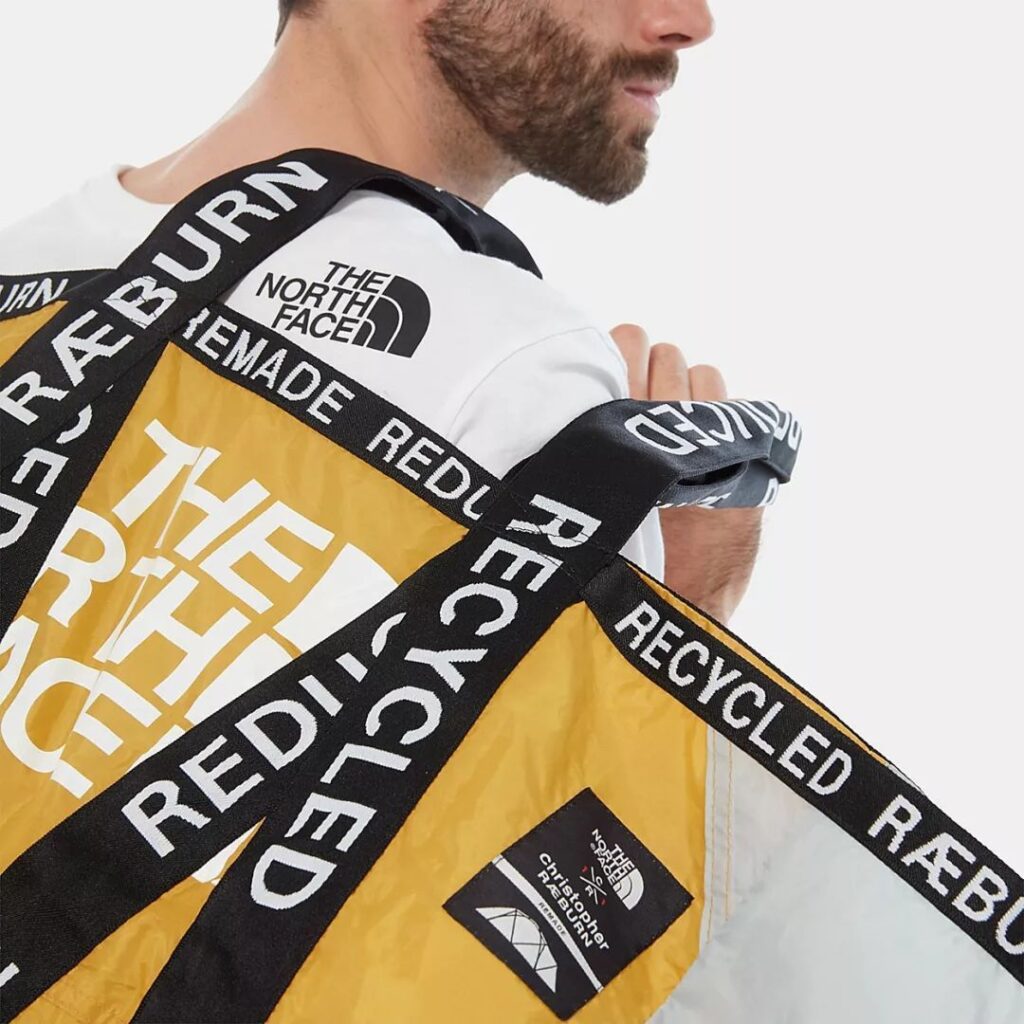
The “Raemade from old tents” capsule collection includes three different designs: Rae, Tote, and Drawstring. Two shoulder bags, one large and one drawstring, and a beanbag backpack handmade by recycling old tents sold by The North Face. Introduced in March 2019, the collection features the iconic TNF logo and RÆBURN’s slogan “REDUCED, REUSED RECYCLED, RÆBURN” in the straps. There is an internal pocket for additional storage and each bag can be stored in a small pocket. The three models aspire to reduce waste and produce the highest quality, eco-friendly “bagagerie” items.
Timberland x Ræburn
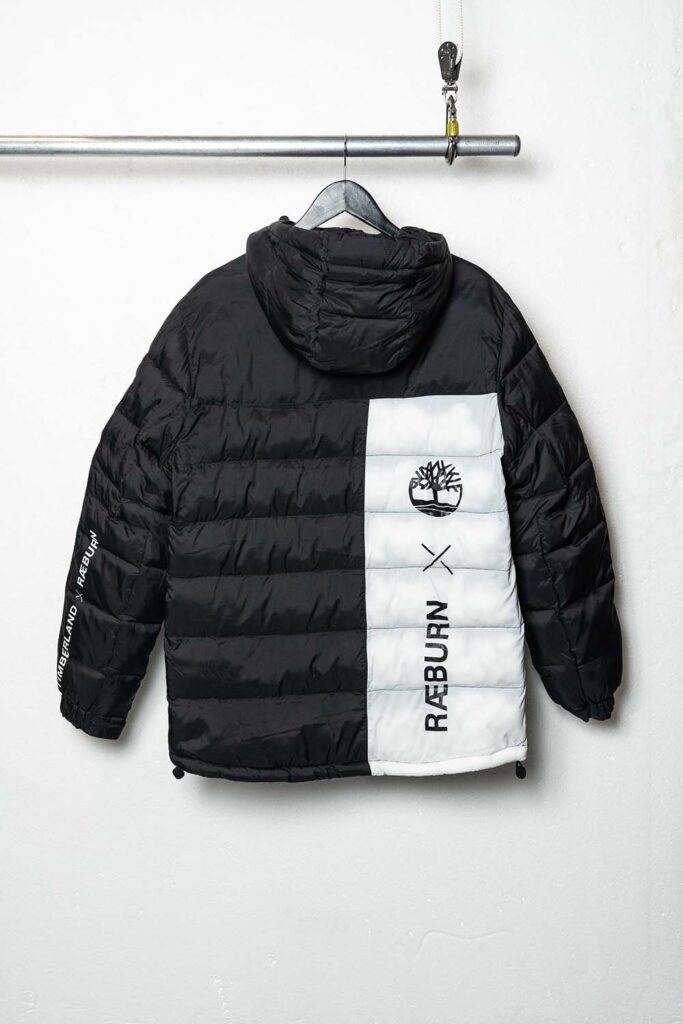
Following his REMADE philosophy, Raeburn used decommissioned military parachutes to recreate original Timberland silhouettes, including the iconic Weatherbreaker jacket. These unique pieces were the inspiration for the Timberland x Ræburn Fall-Winter ’19 collection.
Shorts and long sleeve shirts, crewneck and hoodies, joggers and cargo pants as well as a wide range of outerwear. Top pieces include the Brooklyn Fabric Mid Hiker for men and the Delphiville Fabric Mid Hiker for the women’s collection. 17 Mainline garments and 11 Limited Edition styles made from recycled materials, such as ReBolt, a lightweight, breathable yarn owned by Timberland and made from 40% recycled plastic. Aesthetically, the collection takes advantage of geometric color blocking in shades of red, grey, black, and olive. The original Timberland x Ræburn band is cleverly used as a lace, zipper hook, seam cover, and in other strategic places, giving the garments a bold and contemporary look.
Eastpack by Christopher Raeburn
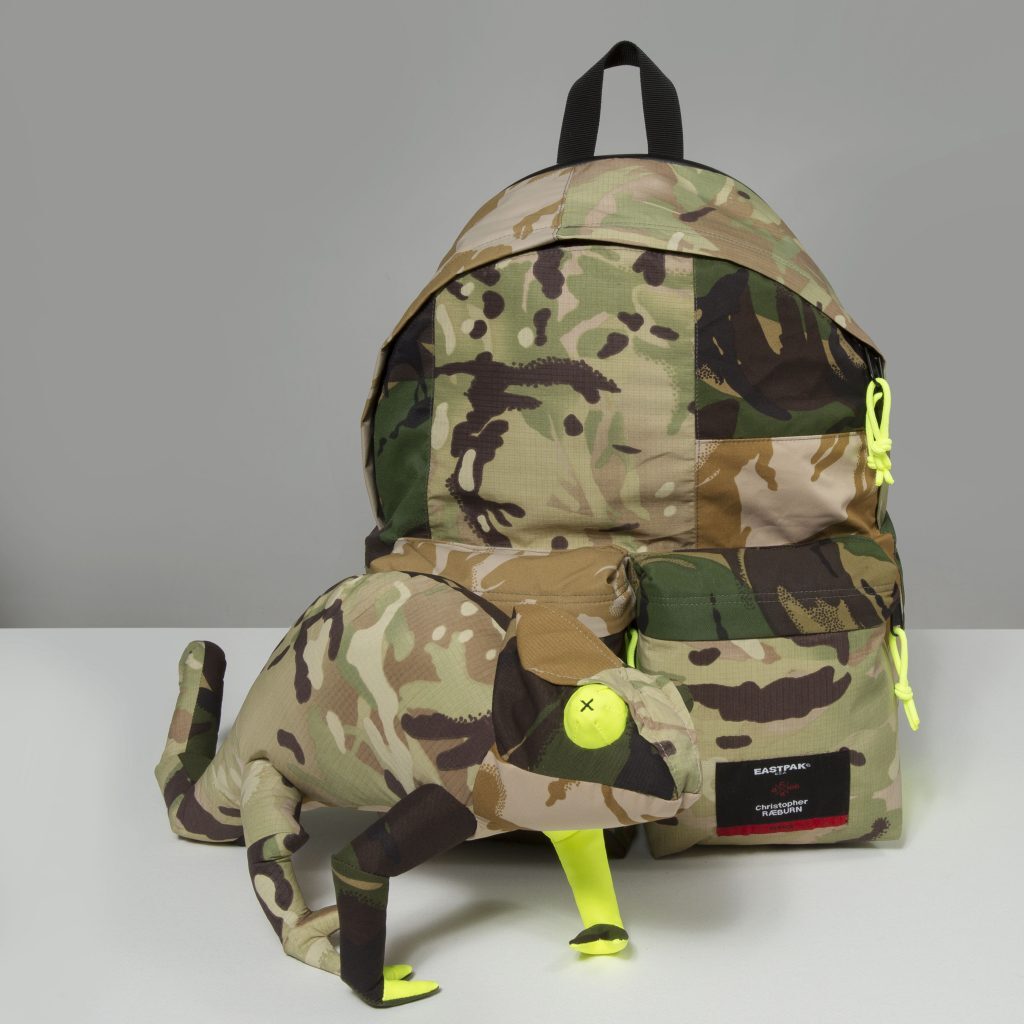
The recycled fabrics Christopher Raeburn used for a limited edition of Eastpack backpacks come from British Military and British Border Force uniforms. He got a patchwork of vintage camouflage patterns that contrast with fluorescent rubber panels belonging to police jackets. The Padded Park’r model maintains its iconic silhouette. Bust, a highly functional backpack, combines vintage camo patterns with high-visibility fluorescent details. While Plister is a versatile travel bag. There are only 100 pieces of each model, and given the provenance, no two models will ever be completely alike.
Raeburn and Layer
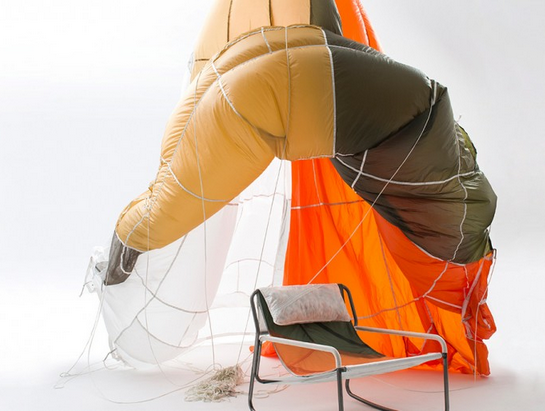
Raeburn and the design firm Layer joined forces to create a project that celebrated the world of industrial design in a sustainable version. With the intent of enhancing and contextualizing circular materials that are still valid, a parachute became a chair. The structure is made of steel while the parachute parts are used to shape the body of the chair, taking advantage of the particular strength of the fabric.
Raeburn also collaborated with footwear specialist Palladium to transform recycled rubber and reclaimed leather into river sneakers and waterproof socks.
Finally, an agreement with Blackhorse Lane Ateliers resulted in the creation of bold denim shorts.
WORKSHOP TO TEACH SUSTAINABILITY
In its East London location, a recovered and repurposed former Burberry factory, the Raeburn Studio is also open to the public. Many workshops scheduled every month: from how to transform a recycled fabric into a bag to how to make a puppet from scraps. A tangible (and fun) way to get the message across that everyone can do something, without extremisms.
With the same educational purpose the campaign “BUY NOTHING, RÆPAIR SOMETHING” promoted during the last Black Friday. In order to promote the concepts of repair, reuse, and recycle, with the claim “RÆMADE, RÆDUCED, RÆCYCLED”, people were encouraged to come to the RÆBURN Lab bringing old garments, regardless of brand, to have them repaired or altered by on-site seamstresses.


